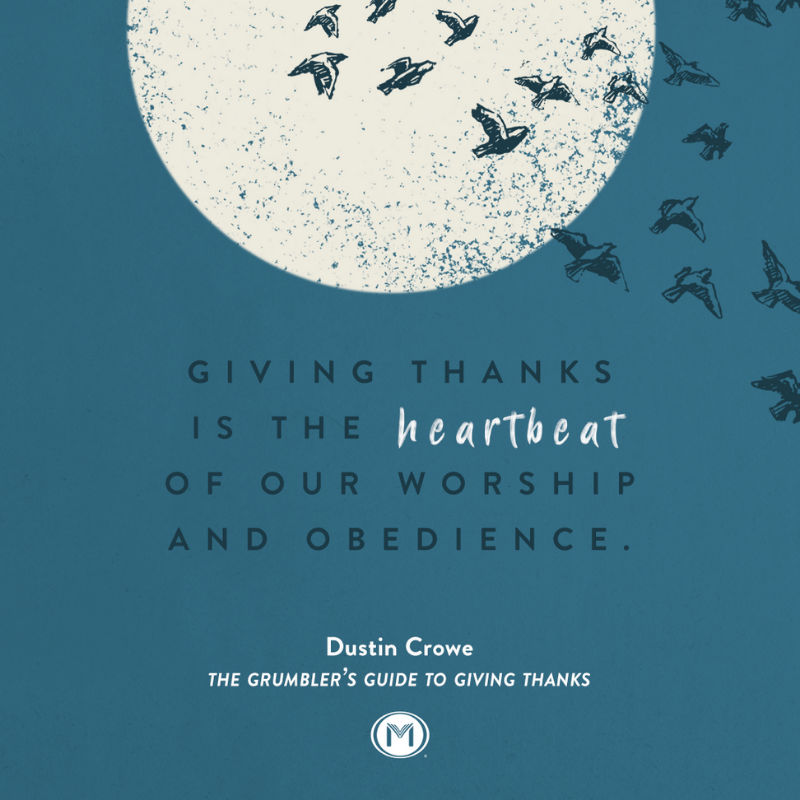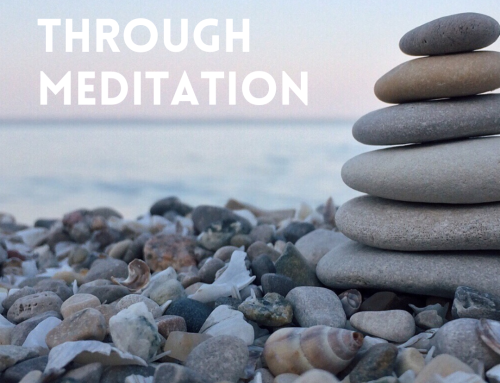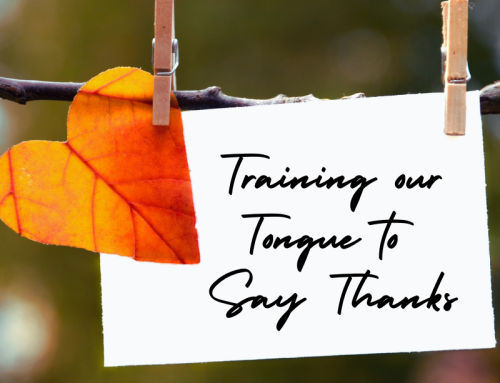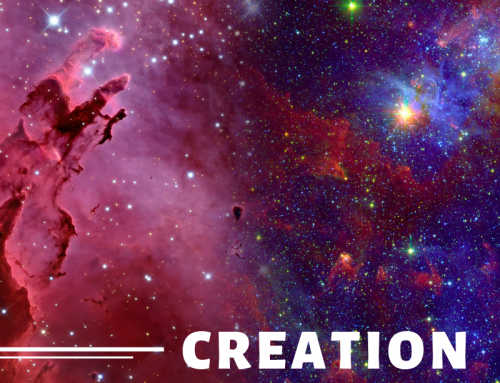Training Our Tongue to Say Thanks
by:
I have a wonderful three-year-old daughter. The early days of her life consisted of feeding her, changing her, and trying anything to make her sleep. Then she became much more interactive. It felt like every week she learned new skills, sentences, and behaviors. Some words came naturally: mine, now, and I want to. Others took more work. Words like please and thank you needed encouraged and reinforced.
This is (fallen) human nature, diapers or not. Adults might learn to be more polite, but we still struggle with entitlement, grumbling, and dishing out orders. Whether it’s throwing mashed potatoes on the floor or venting in anger on the phone or through social media, we protest and complain. Instilling gratitude takes work. We need to fight the “gimme gimme gimme” desires inside of us and the ways it comes out of us through our words and behaviors.
The mouth and the heart go together. We don’t choose one or the other. Both are necessary, and they work in tandem. Words alone are insufficient, but we can’t give thanks without them. The goal is a heart of thankfulness to God, but often saying the words puts our heart in motion and moves us toward gratitude.
Why We Say Thanks
Psalm 33 encourages us to communicate thanksgiving. It’s easy to think feeling grateful is enough, but we need to use words. Praise makes sense because God is faithful, just, righteous, and loving (33:4–5). This Psalm gives reason thanksgiving is called for by walking us through a mural of God’s history, starting with creation (33:4–9) and moving to God’s providence as kingdoms rise or fall (33:10–19).
A God mighty enough to speak the blazing sun into being and wise enough to know exactly where to put it should be praised. A God who works out His plan for our good during the rise and fall of nations and leaders deserves our thanksgiving. This history lesson leads Israel to hope in and trust in God as their help and shield (33:20–22).
The Psalm communicates the glory of God as an appeal to praise and thank Him. It’s a call to be moved into worship by what we believe about God. Don’t forget what you’ve experienced because of Him and what you think about Him. If you believe God is Creator and King over all things, and if you believe He is your help and shield, then these beliefs should not be compartmentalized and kept in a dusty file cabinet of your mind. These weighty truths should lead to thanksgiving and trust. Praise is fitting.
Thanksgiving might start as an internal matter as you feel grateful, but it must move from the inside out as you give thanks. The psalmist mentions singing to God with a “new song.” Gratitude is a renewable energy. Like solar lights in my backyard energized by the sun each day, the more we see God and notice how He’s at work, the more reasons we have to give thanks. Every day there are mercies and blessings fueling a new song of thanksgiving.
While thanksgiving is a renewable energy source, sometimes we need a battery back-up. As the clouds of trials, discouragement, or busyness block the rays of God’s light from shining into our life, our gratitude can feel depleted. It’s then that we recall what God has done or who He has been. These are reserves we can draw on for a season, but the goal is to fill up on who God is and what He’s done for us each day. We have many reasons to give thanks in the past, but we also have many reasons to give thanks today. Stock up on both.
Ways to Give Thanks
Seeing God should lead to worshipping Him in thanksgiving. There are many ways we can do this: singing, praying, testimony, storytelling, conversation, and writing it down, to name a few ways.
Imagine you are part of a group making meals together. One night there might be a special ingredient and the objective is to work it into each aspect of the meal: the appetizer, the entrée, the side dishes, dessert, and even the drinks. Let’s say the ingredient is honey, so you weave it throughout the meal. It might be used in greater or lesser degrees, it might be a main flavor or a subtle note, and it could be a glaze on the outside or mixed within something. Honey permeates the meal.
Thanksgiving should saturate our thoughts and words like this. It seasons our prayers, stories, memories, songs, sermons, and our large group testimonies and small group conversations.
These various ways of expressing thanksgiving not only allow gratitude to surface, but they also help develop it where it’s lacking. Like my daughter learns the value of thanksgiving and grows in gratitude by verbalizing her “Thank you,” we train both our mouths and our hearts to pursue thanksgiving by saying it. Words not only formulate what we feel, but sometimes by writing or saying them they “grow the feeling.” Choosing to say thanks causes us to consider what we’re thankful for, which increases our gratitude.Thanksgiving is best when it’s not an afterthought we work in at the end, but it’s kneaded into every part of us. We need to work it into our day, intentionally include it in our conversations, and verbalize it through our words. It’s how we train our head, heart, and mouth—all together—in the practice of thanksgiving.
Start today. Find ways to tell God thank you. Then tell others what you’re thankful for. Don’t settle for a vague feeling of gratitude. Feed it by focusing on specific reasons you’re grateful and giving thanks to God.
For more on thanksgiving, see Dustin Crowe’s new book: The Grumbler’s Guide to Giving Thanks: Reclaiming the Gifts of a Lost Spiritual Discipline.





